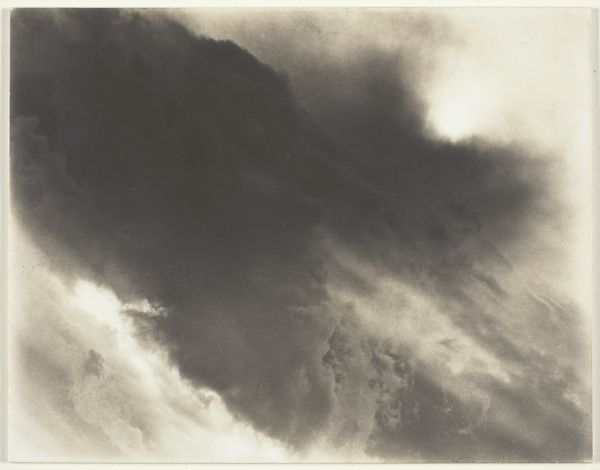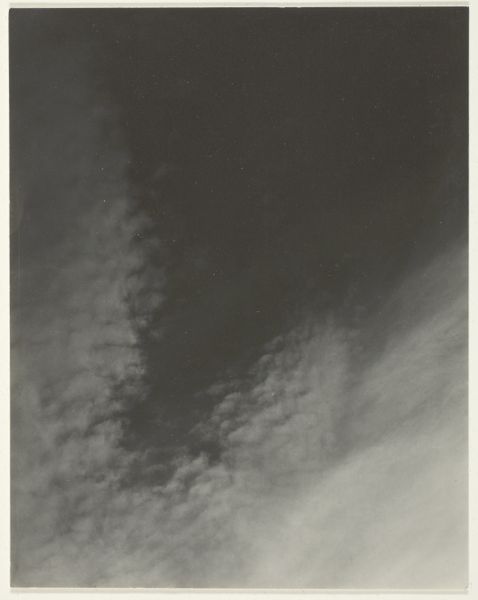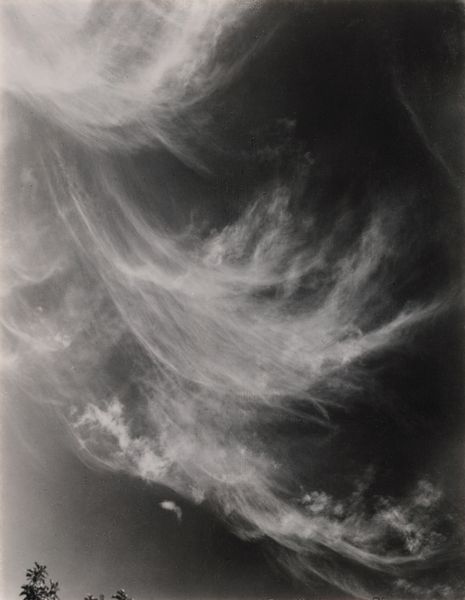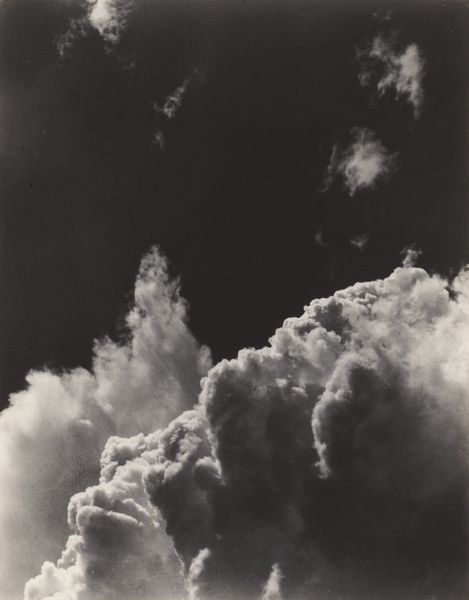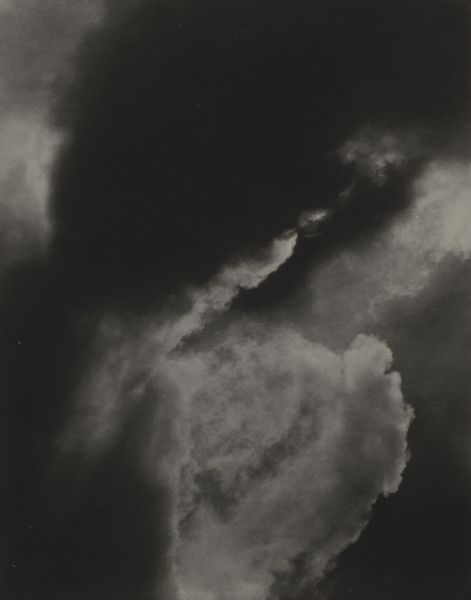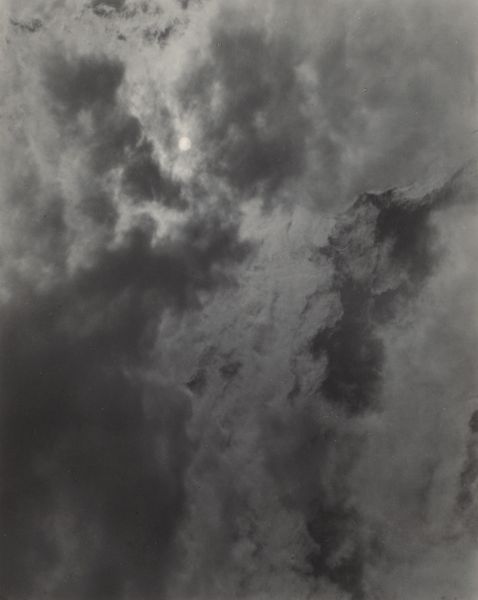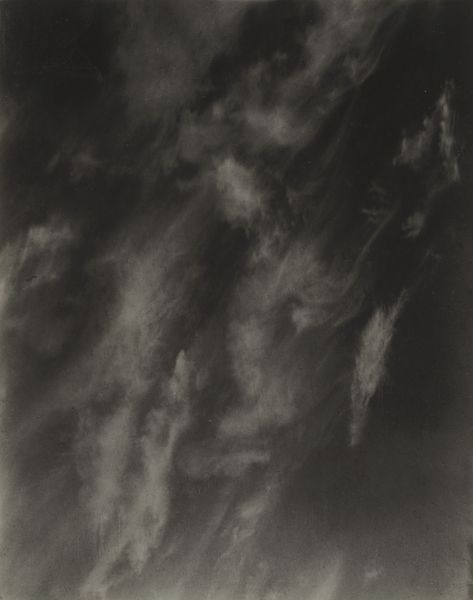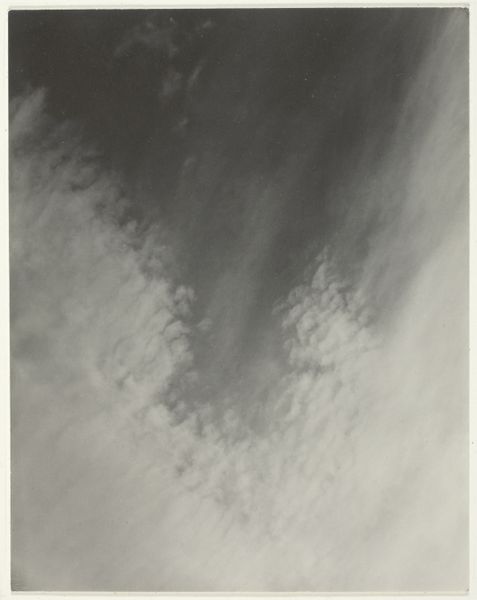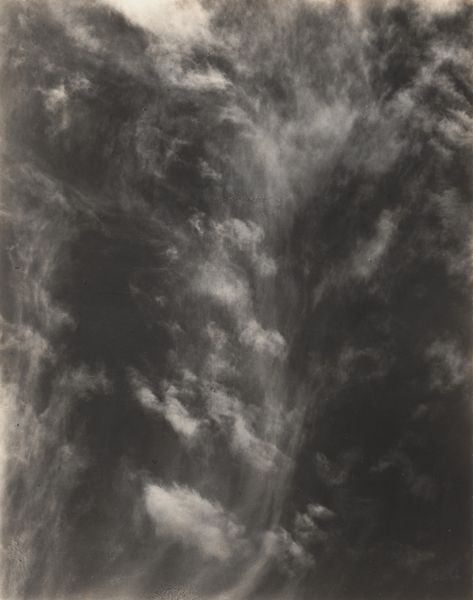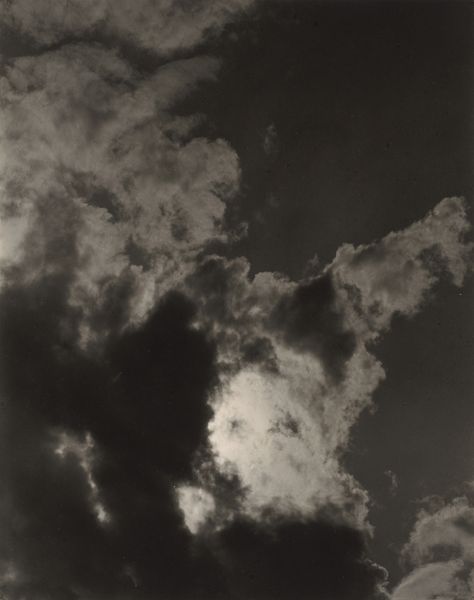
Dimensions: 12 × 9.3 cm (image/paper/first mount); 34.9 × 27.2 cm (second mount)
Copyright: Public Domain
Editor: This is "Equivalent," a photograph by Alfred Stieglitz, taken in 1925. It's a silver print on paper, depicting clouds. The grayscale and soft focus give it a dreamlike, ethereal quality. What strikes me most is how abstract it feels for a photograph. What do you see in this piece? Curator: This work is indeed deceptively simple. On one level, we see a landscape. But Stieglitz was deeply engaged with the artistic and social questions of his time. Remember that he was working in the interwar period, grappling with rapid industrialization and its impact on individual lives and experiences. So, to read these images merely as pretty clouds overlooks the artist’s political commentary. Editor: Political commentary? In clouds? Curator: Absolutely. Think of these cloudscapes as Stieglitz’s response to the debate surrounding photography as a fine art. At the time, photography was often dismissed as purely mechanical, lacking the artistic soul found in painting or sculpture. These photographs were made during a period of personal and professional upheaval for Stieglitz. He famously claimed these cloud photographs were equivalents to his states of mind and internal experiences. So he used the clouds, this accessible natural subject, to claim photography's space for artistic expression and its power to communicate something deeply human. Do you think he succeeded? Editor: I see your point. He's using something seemingly objective – a photograph of clouds – to express something entirely subjective, almost defiant in its abstraction. It challenges the viewer to look beyond the surface. I suppose I see it differently now, with a new understanding. Curator: Precisely. And remember, the seemingly universal is always shaped by its historical and social moment. Thinking about it through Stieglitz’s engagement in culture and photography shifts the way we think about it. It reframes art as a vehicle for claiming legitimacy, navigating societal shifts and political tension.
Comments
No comments
Be the first to comment and join the conversation on the ultimate creative platform.
